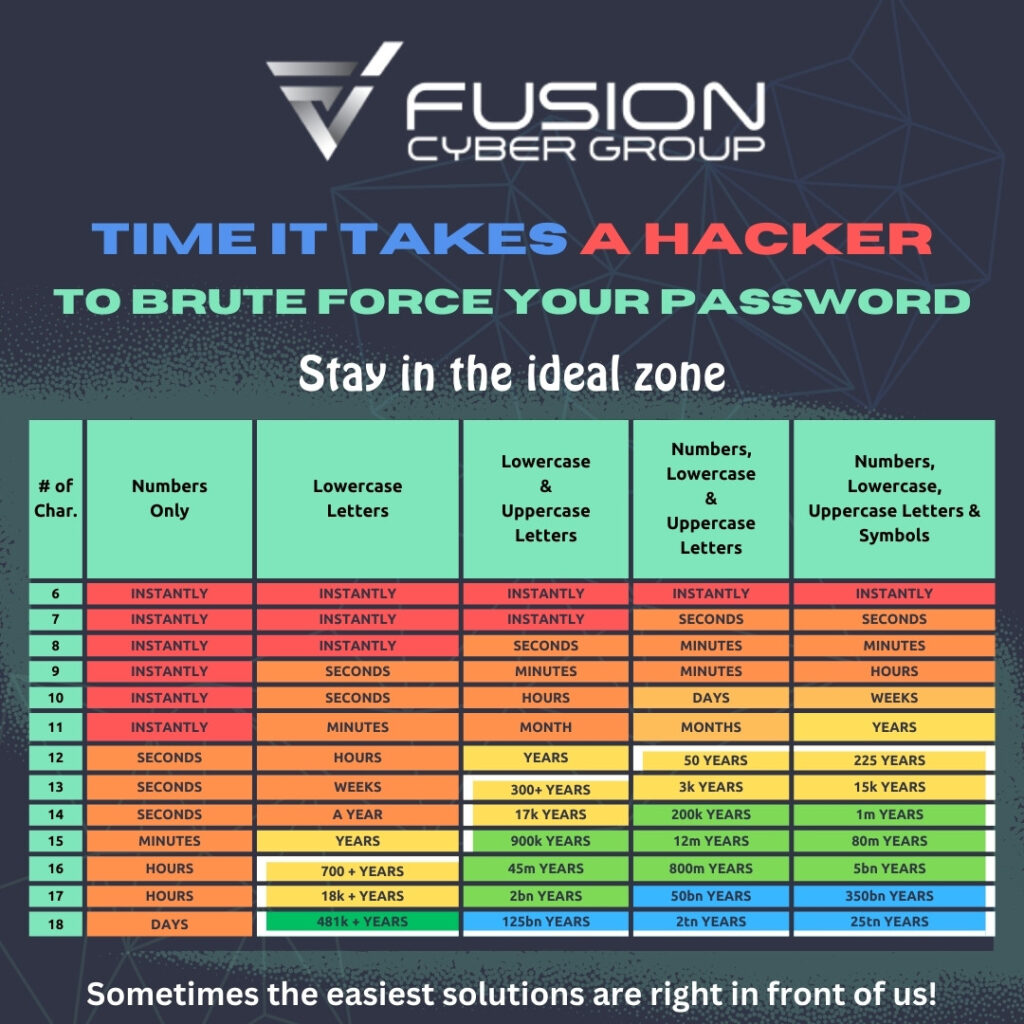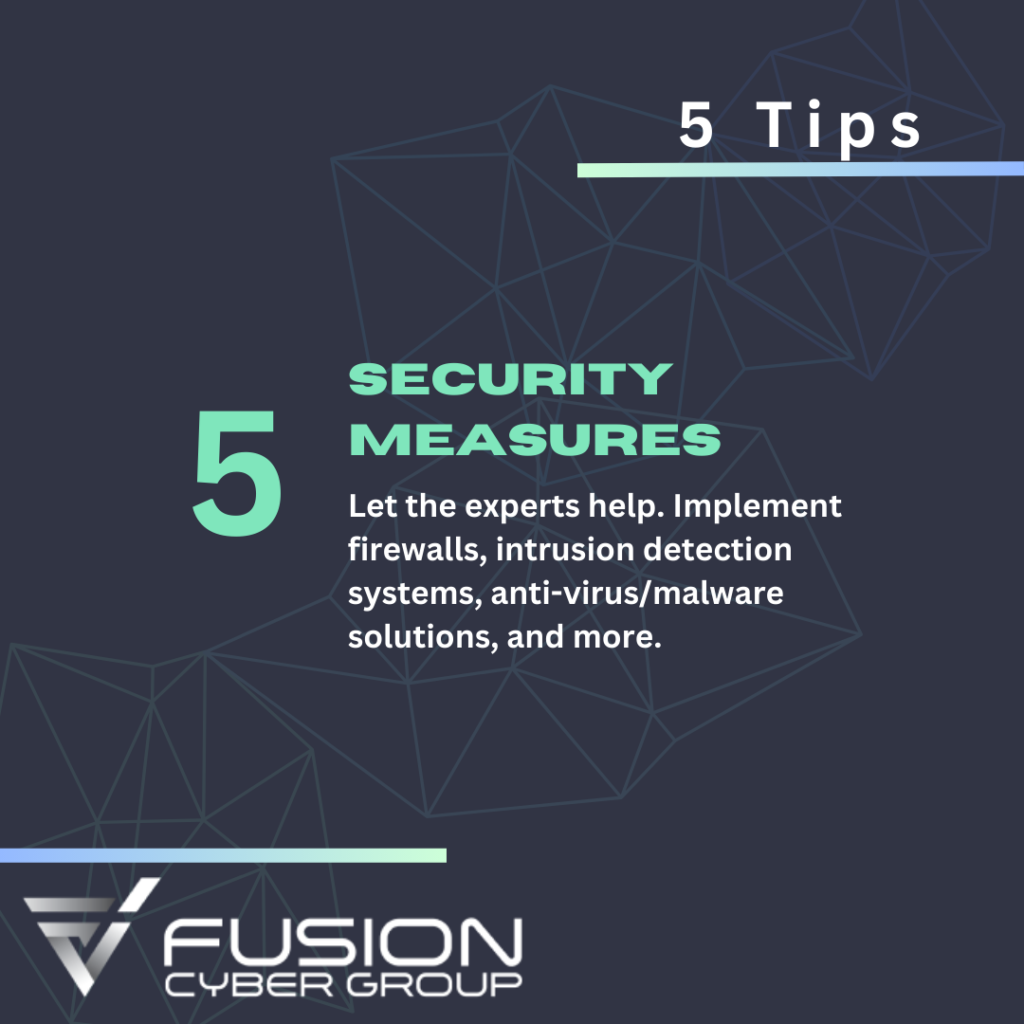Check-out the Cause, Effect,
& WHAT’S YOU
SHOULD DO NEXT
1. Frequent password rotation & rigid complexity rules 🛑
Outdated: Regularly forcing users to change passwords and using arcane complexity requirements (e.g. “must have 3 symbols, 2 numbers”) was once considered best practice.
Why it doesn’t work today: It frustrates users, leads to weak, predictable passwords, and doesn’t improve security significantly.
New approach:
- Use password managers combined with passphrases that are easy for users but strong enough to resist attacks.
- Require multi-factor authentication (MFA) throughout — even replacing SMS‑based codes with more secure methods like TOTP, push prompts, or hardware keys.
2. Reliance on antivirus as the sole endpoint defense
Outdated: “Install an antivirus and you’re safe” was the mantra for decades.
Why it fails now: Modern malware and fileless attacks bypass traditional antivirus tools.
New approach:
- Deploy Endpoint Detection & Response (EDR/XDR) platforms using behavior-based analysis.
- Integrate telemetry and AI for rapid detection and response across the attack chain.
3. Perimeter-only defenses & “castle-and-moat” security
Outdated: Focusing security solely at the network perimeter—firewalls, VPNs, and DMZs.
Why it’s insufficient: Cloud, remote work, and sophisticated adversaries exploit internal trust zones and lateral movement.
New approach:
- Adopt Zero Trust principles: “never trust, always verify,” with continuous authentication and least privilege access.
- Enforce micro‑segmentation, network visibility, and granular policy controls.
4. Manual patching and outdated software management
Outdated: Patches applied manually, ad hoc, or only during quarterly audits.
Why it’s problematic: Unpatched software remains a top attack vector—32% of breaches exploit known vulnerabilities.
New approach:
- Use automated patching, continuous vulnerability scanning, and policy-driven updates.
- Implement asset inventory and lifecycle management to track and retire end-of-life software quickly.
5. Relying on SMS‑based and knowledge‑based MFA
Outdated: Texting users codes or using outdated security questions (“Mom’s maiden name?”).
Why it’s flawed: SMS is prone to interception and SIM‑swapping; knowledge-based methods are easily answered via social engineering.
New approach:
- Deploy stronger MFA: hardware tokens (FIDO2), authenticator apps, or certificate-based methods.
- Use risk‑based adaptive authentication that evaluates user behavior in real time.
6. Compliance-focused, checkbox security
Outdated: Meeting the letter of regulatory frameworks without considering real-world effectiveness.
Why it fails: Checking boxes doesn’t prevent sophisticated, evolving attacks.
New approach:
- Shift to Secure‑by‑Design: embed security throughout the system lifecycle.
- Use continuous monitoring and resilience assessments alongside compliance frameworks (e.g., NIST CSF v2.0).
7. Neglecting routine cybersecurity hygiene due to fatigue
Outdated: Basic tasks like restricting administrative access, timely patching, or PowerShell governance often get ignored.
Why it’s dangerous: Burnout leads to lapses that adversaries exploit using known malware like Mirai, and attacks against unpatched systems.
New approach:
- Establish cyber hygiene protocols with automation—automated patching, least privilege enforcement, and policy compliance tooling.
- Foster a culture prioritizing routine defense tasks and combating analyst fatigue.
✅ Summary Table
| Obsolete Practice | Modern Replacement |
| Password rotation & complexity rules | Unique passphrases + password managers + MFA |
| Traditional antivirus | EDR/XDR with behavior & AI-powered analytics |
| Perimeter-only defenses | Zero Trust with micro‑segmentation and continuous identity validation |
| Manual patching | Automated patching, vulnerability orchestration, EOL software retirement |
| SMS-based MFA | Hardware tokens, TOTP, adaptive authentication |
| Checkbox compliance | Secure-by-design, continuous monitoring, resilience-based maturity |
| Ignoring basic hygiene | Cyber hygiene via automation, least privilege, policy enforcement, fatigue reduction |
🔓 Why Now?
- Attackers are evolving fast: AI-fueled threats, phishing, and lateral movement are deprecating legacy defenses.
- Perimeter dissolving: Remote work, cloud services, and IoT mean the notion of “inside” and “outside” has vanished.
- Burnout and visibility gaps: When basic care isn’t automated or enforced, breaches follow.
🛡️ Your Roadmap to Modern Security
- Conduct a maturity assessment using frameworks like NIST CSF 2.0 or the KPMG security considerations report.
- Identify hygiene lapses via red-teaming and drills focusing on patching, least privilege, and MFA coverage.
- Upgrade foundational layers: Zero Trust, EDR, MFA, and automation for patching.
- Embed security by design into new systems and workflows, emphasizing continuous telemetry.
- Balance automation with humans, reduce analyst burnout, and build resilient routines.
⚠️ Final Take
Sticking with yesterday’s defenses—password dramas, perimeter walls, patch excuses—won’t keep you safe in 2025 and beyond. To repel today’s adversaries, retire outdated habits and layer in modern, automated, intelligence-driven defences. Prioritize visibility, resilience, and continuous protection—not compliance theater.
Let me know if you’d like to expand on any section, include real-world examples, or focus on a specific industry!
Ready to strengthen your cybersecurity defenses?
Contact us today for your FREE network assessment and take the first step towards safeguarding your business from cyber threats!
🎧







































































